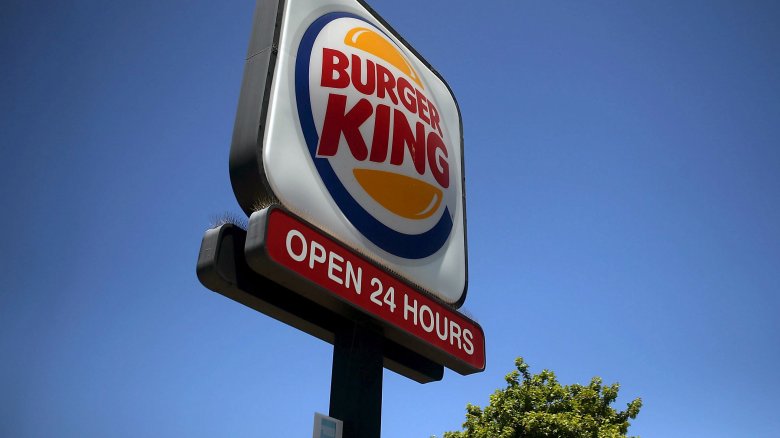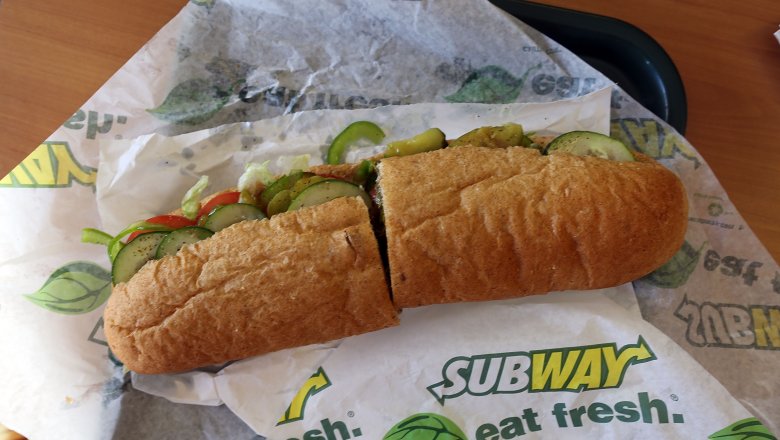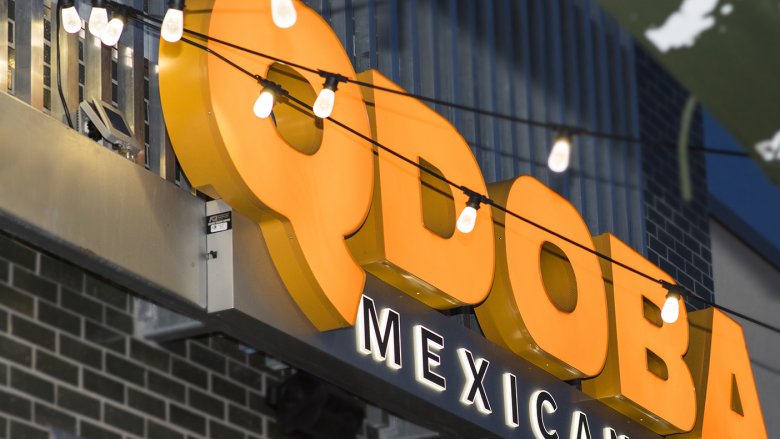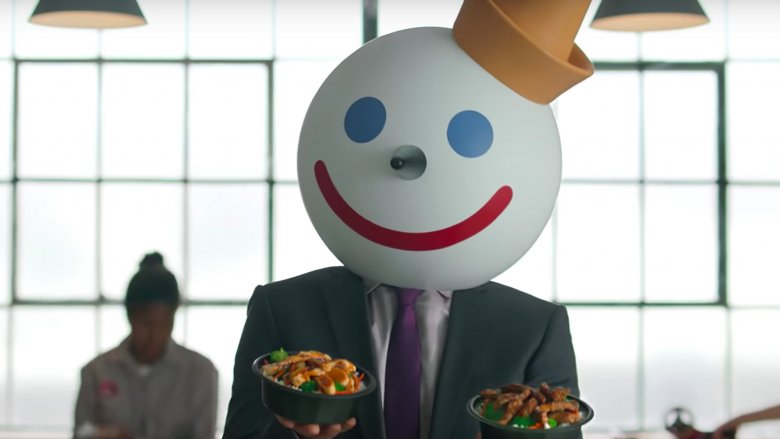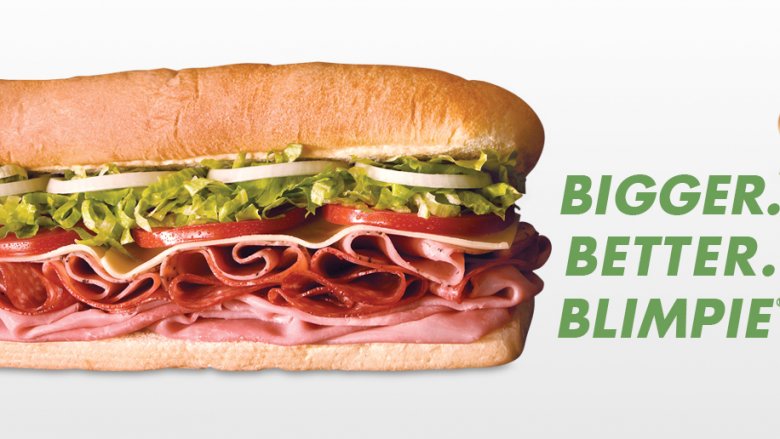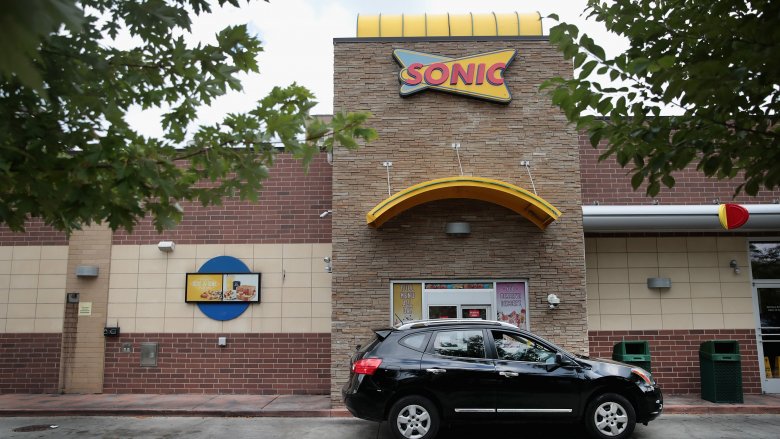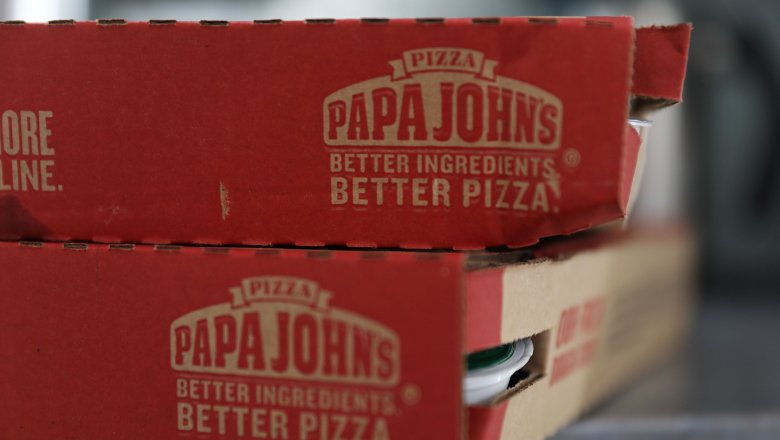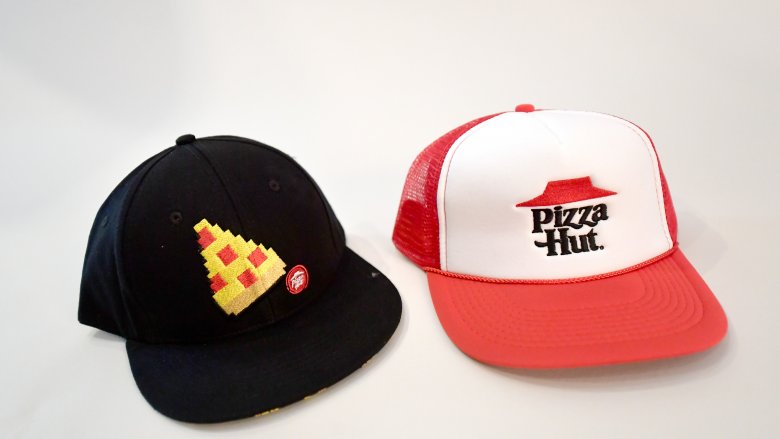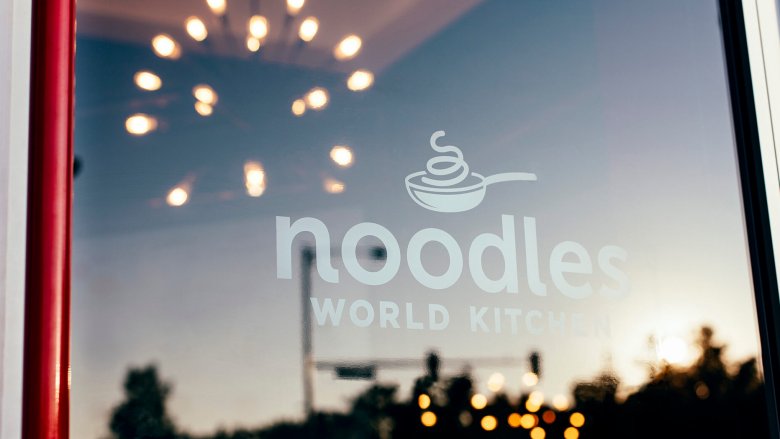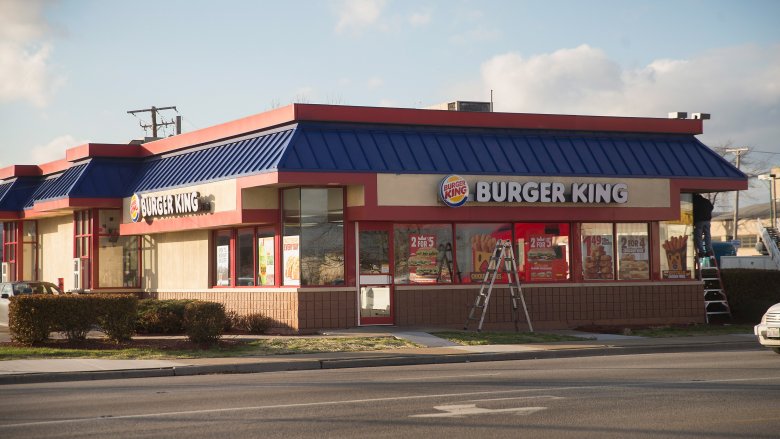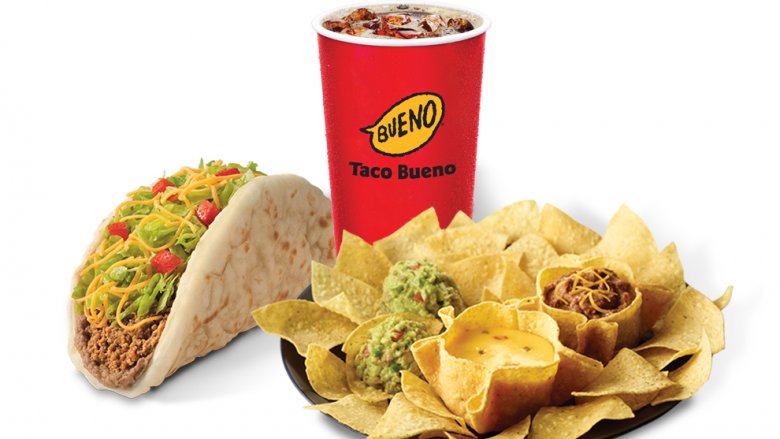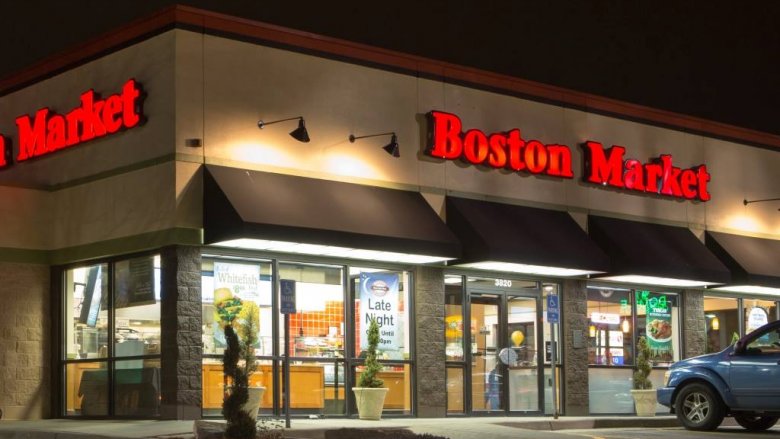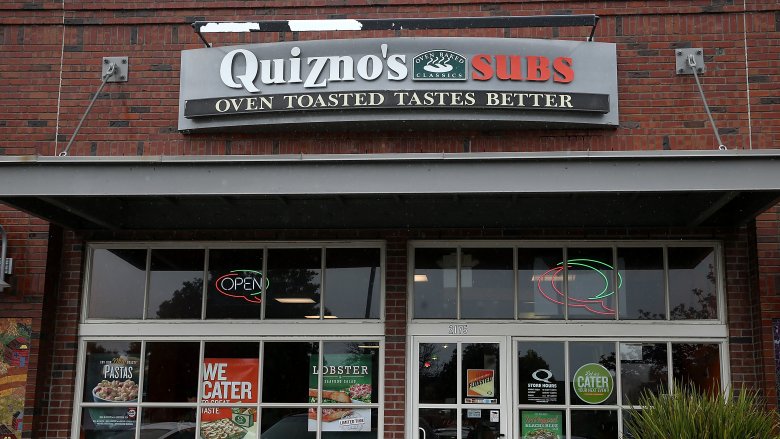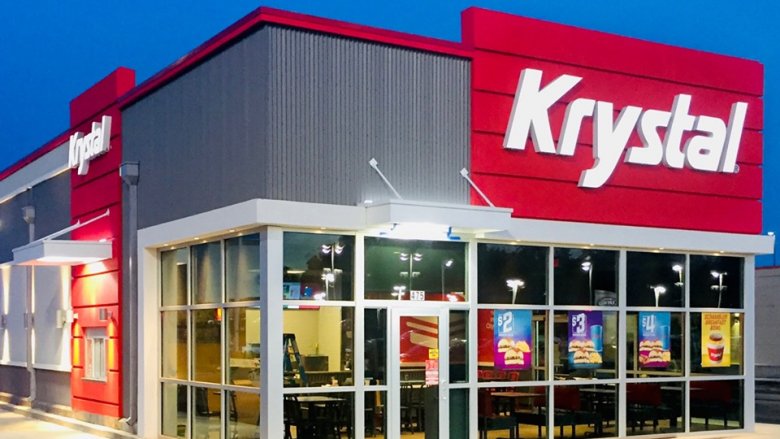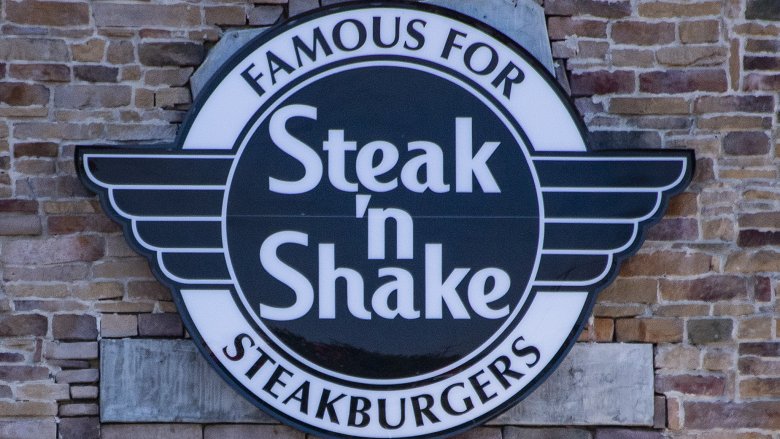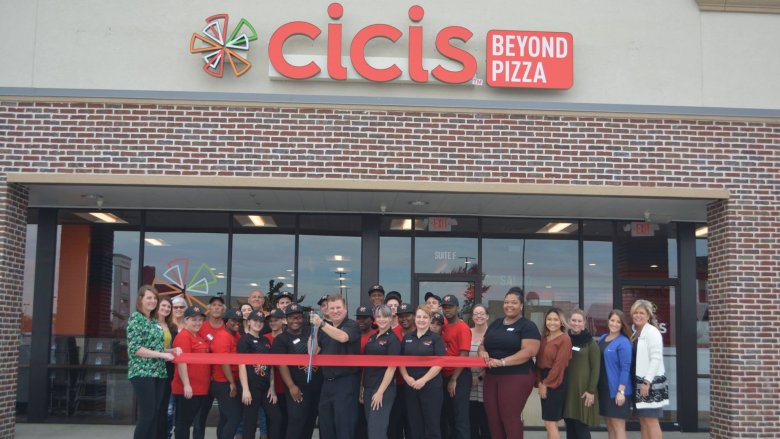Fast Food Chains That Are Seriously Struggling
Even in the best economy, the restaurant industry is all about struggle. Margins are so tight even the slightest change in one statistic can make life miserable even for the finest of establishments. Restaurants have been taken down by rising food prices, tumbling foot traffic, or government investigations, and fast food chains in particular can swing from ubiquitous to near-oblivion with shocking speed.
Just ask Krispy Kreme, which barely survived the early 2000s, thanks to growing too quickly and diluting their own market, or former American titan Howard Johnson's, undone by a mix of poor management and not keeping up with its competitors.
Some restaurants can survive, of course, but that doesn't mean the ride up, or down, won't be a bumpy one, and there's no guarantee of a return at the end. With that in mind, let's look at some of the major fast food chains that are facing some major problems today.
Subway
The single biggest fast food chain by sheer volume, with over 20,000 stores just in the US, Subway should be eating $5 footlongs at the top of the heap. Instead it's on the verge of completely imploding. While Subway is a private company, and thus doesn't have to fork over numbers to anybody, The Washington Post reported a drop in foot traffic of 25 percent over the last several years, and hundreds of franchises have closed. Worse, some estimates claim up to a third of all Subways are losing money.
The problem, at least according to franchisees, is the leadership. Subway is still mostly owned by its founders, so what the families say, goes. While Suzanne Greco, sister of deceased co-founder Fred DeLuca, retired as CEO in June, the problems she couldn't solve remain. There are simply too many places to get Subway, to the point that the chain may be cannibalizing its own sales, and not enough reasons to buy there amid a glut of other sandwich chains like the rapidly expanding Jersey Mike's.
And depending on who you ask, Subway may have invited a fox into the lunchmeat case. Subway hired management consultants Bain & Company in June to help organize the chain and quite possibly prepare it for a sale. If the chain is sold, odds are good quite a few stores will close, and the chain might become the target of a leveraged buyout, the same financial instrument that's done in chains like Toys R' Us.
Qdoba
When Qdoba made fun of Chipotle's free guac day by delivering avocados to its rival's stores by the truckload, to highlight that it always offers guac for free, it was pretty funny. But it was also a reminder that less than a year earlier, Qdoba had insisted its free green stuff was eating into the bottom line, as avocado prices were being driven up, although thankfully they stopped short of blaming those goldurn Millennials and their Instafacetimes. But despite the good taste, but Qdoba still went through an awkward breakup, as it was sold by owner Jack In The Box to Apollo Management for $305 million in late 2017. In case this sounds like good news, we should point out Apollo specializes in turning around distressed assets, sometimes with leveraged buyouts.
Worse news for the chain is that there's been a distinct lack of good news. While Chipotle just had a great quarter despite years of bad press, and Moe's is rapidly rising as a popular eatery, other Mexican joints are struggling. Paired with the financial tacopocalypse we'll continue to discuss, Qdoba has a foundation of financial guacamole, and it doesn't have much time to shore it up.
Jack in the Box
Credit where it's due, burger-and-taco purveyor Jack in the Box, around since 1951, has been through a string of problems that would have killed most chains. In the 1980s, it was accidentally shipped horse meat labelled as beef, thanks to some unethical Australian supplier, and spent years proving it wasn't serving Mr. Ed with a side of fries. It next became infamous for a food poisoning outbreak in 1993 that sickened more than 700 people and killed four children. It managed to recover, and in the early 2000s planned for a nationwide expansion, something it boldly announced with a nationwide ad buy promoting restaurants hundreds of miles away. They quickly realized the too-fast growth was causing them to cannibalize their own sales, curtailing those plans. Still, the company has managed to open restaurants well outside its West Coast stomping grounds.
But this might be their biggest challenge yet: Like almost every other burger chain, Jack is up against the fact that Americans are just eating less cow, from the humble burger to the fine steak. We're in the middle of a truly epic beef bust as consumption drops overall and consumers that do eat burgers get them from higher-end chains like Shake Shack, or hit the dollar menu of bigger chains. This hollowing-out of the middle is well outside Jack's control, and it's happening across the food industry. Jack either has to go low or go high, and even that might not be enough.
Blimpie
Blimpie was one of the dominant sandwich shops in the '80s, and how it got there is something of a wild story in of itself, but also one that laid the groundwork for the company's painful current issues. Blimpie as a company mostly made money on franchise fees, and didn't particularly care what those franchisees did as long as the home office got their cut. This led to massive expansion, since anybody with a check, pretty much, could open a Blimpie and start selling... well, pretty much anything food-like.
But as Subway, Jimmy Johns, and other sandwich places began catching on, Blimpie lost air. Starting in 2002 and through at least 2011, Blimpie had to close over a 1000 stores. It appears, at this point, that Blimpie still hasn't managed to stem the bleeding, as they've closed around 500 more stores since 2012. They're hanging on, but that leaves it facing the same issues its competitors do, without having any of their advantages. Think of them as the Ratt to Subway's Bon Jovi.
Sonic Drive-In
If you thought the pickle slushie seemed a wee bit thirsty an act by a fast food joint, well... you're not wrong. Sonic has seen eight straight quarters of declining sales. It's not really hard to see why: It's a drive-in, when headlines are screaming about climate change, and which is a business model that makes it vulnerable to gas prices, to boot. And it serves sugary drinks and fried food right when obesity and public health are very much on people's mind. Add to that the fact that they're competing with massive brands like McDonald's and Wendy's, and it's not hard to see why they're hurting.
Mostly the company had been keeping afloat by buying back its own stock and selling off its company-owned stores to franchisees, but those were stopgap measures. It finally managed to sell itself to the company behind Arby's, which picked Sonic up for $2.3 billion, but that also means it now has to sink or swim with a concept that feels like the culinary equivalent of chain-smoking in a coal mine. Maybe lay down some solar panels?
Papa Johns
The Papa has taken a hard fall. It starts with John Schnatter, founder and former CEO of Papa John's. Schnatter had an unfortunate habit of weighing in, very publicly, on non-pizza-related issues, and that came to a head at the end of 2017, when after demanding NFL players stand for the national anthem, he stepped down as CEO of the company. He still owned 31 percent of the stock, though, and was still chairman.
Then in July it came out he used a racial slur, specifically the n-word, on a conference call. Schnatter resigned as chairman, but immediately turned around and started planning to take back control of the company, which immediately lawyered up and tried to force Schnatter to sign a contract to keep him from doing just that. It then came out that Schnatter ignored, or even encouraged, a hostile and toxic corporate culture, including several allegations of sexual harassment.
The damage has already been enormous. The company has spent millions to prop up suffering franchisees and clean up its image, which is dragging down its stock, and lost its lucrative gig as the official pizza place of the NFL to Pizza Hut. And it doesn't appear they've managed to hit bottom just yet, either. Schnatter is not backing down on his attempts to buy back the company and is publicly criticizing the current leadership every chance he gets. As long as this ugly public fight keeps going, Papa John's is at risk of going away for good.
Pizza Hut
A decade ago, the idea that the people making it great would find themselves cruelly dunked on by a chain like Dominos, with its cardboard crust and the rumored awkward politics of its founder, would seem like a joke. But the intervening decade has been a cruel one for the House Of Book-It. Dominos completely remade itself as an ecommerce company that happens to sell pizza, while also acknowledging its critics by completely redoing its menu and remodeling its franchises. Pizza Hut decided its weapon to stop a competitor tearing itself down to the studs and campaigning to do better was... stuffed crust.
The financials speak for themselves. Dominos is one of the dominant fast food players on Wall Street, quickly filling in any gaps in the cheap pizza market, while Pizza Hut can't even clean up after Papa Johns and is dragging down its stablemates KFC and Taco Bell in the Yum Brands portfolio. Currently, it's hoping that picking up Papa Johns' biggest scrap, namely the NFL sponsorship it lost, will help, but that alone isn't going to keep the entire chain from becoming another entry on Used To Be A Pizza Hut.
Noodles And Co.
First launched in 1995, Noodles and Co. spent most of its first ten years building an empire one dish of pasta at a time. By the time it went public in 2013, it was worth $300 million. Then the troubles started; it's been steadily contracting since 2015, which became, for the next few years, an unfortunate tradition: 55 locations closed in 2017. Ironically, it'd managed to turn this around in 2018, but since it didn't turn it around quite enough for Wall Street's tastes, and lost a fifth of its value. Some blame the low-carb craze for the problem, which Noodles and Co. has been fighting with their new zucchini noodles.
The issue, fundamentally, is right now it's treading water. It's profitable, barely, but the restaurant industry is rarely kind to any place you describe as "barely" anything. Wall Street seems to be unsure whether it'll start swimming, get eaten by a shark, or slowly drown, but of the three options, it currently seems to think the latter two are the most likely.
Burger King
Don't get us wrong, Burger King is still King when it comes to brilliant ads. But it's got some problems, starting with Canadians. The burger joint's owner, Restaurant Brands International, also owns the Canadian donut and coffee chain Tim Horton's, which has gotten into a fight with its franchisees so bitter, it's taken to locking them out of their restaurants. While its bosses are busy disproving the polite Canadian stereotype, the sales at BK outlets have been squeezed by the same steady drop in foot traffic that's wounding restaurants across the board. Not helping matters is the menu, which has barely been revised in years, and mostly offers the same fried meats you can find at other places.
While the chain is still profitable, it's about to put itself to a major test. The company is well behind fellow burger chains in updating and remodeling its thousands of restaurants, a process franchisees usually have to help pay for. There's a lot of uncertainty that this will make up the gap, especially since no remodel of the menu is yet on the way. The King is about to learn, in other words, just how loyal his subjects are.
Taco Bueno
Taco Bueno has fallen victim to a truly strange trend in the food industry: The tacopocalypse. Around 2014, for some reason known only to them, investment companies got really, really into owning taco joints. Rusty Taco, rechristened R Taco... and then back to Rusty Taco, was bought by Buffalo Wild Wings, which in turn was snapped up by Arby's. California's Del Taco was bought by an investment firm which promptly launched an IPO with the Nasdaq stock symbol TACO. And Taco Bueno was bought by a middle market Dallas firm with, presumably, the goal of taking over the world, or at least giving Taco Bell a run for its money.
Then the shell cracked and all the delicious profits seemingly fell out. While Del Taco is still trying to sit between Chipotle and Taco Bell, at a time when the middle is a perilous place for any chain to be, and Arby's seems to still be figuring out what you do with a chain that actually named itself "Rusty Taco," Taco Bueno went broke and declared Chapter 11. It was bought out by Sun Holdings, a major national franchising company, which paid off its debts and gave it a new round of funding. However, it's not clear how much longer Taco Bueno has, if Sun doesn't make its money back.
Boston Market
In the 1990's Boston Market was the saving grace of family dinner. Crowning themselves the rotisserie experts, the chain saw extensive growth thanks to their fast and easy concept. Families could purchase already made sides and dinners. The concept grew Boston Market to more than 1,100 stores across the U.S. at its peak, but with other retailers catching on and easily duplicating ready-to-eat rotisserie, rapid growth and competitor's low prices ultimately led to the company filing for bankruptcy in 1998.
The restaurant has also changed hands twice in hopes of making a comeback, once by McDonald's in 2000 and then again by Sun Capital Partners in 2007. Even under new ownership, Boston Market hasn't risen above the trenches, seeing a steady decline of sales including a 1.7 percent decrease from 2017 to 2018. Currently, Boston Market has less than 500 stores left, and in 2019, they announced the closing of 45 more stores. This news came after trying to jump on the healthy bandwagon with a new summer menu, but CEO Frances Allen still has hope. "We must take steps to ensure our operational structure will support long-term sustainability. Part of that effort involves continuously analyzing our geographic footprint and real estate portfolio to assess the ongoing viability of locations."
With many grocery stores and one stop shop retailers now offering ready-to-eat rotisserie, Boston Market needs to find a competitive edge that gives reason for customers to want to make an additional stop in their already hectic schedules.
Quiznos
When Quiznos first came about, they stockpiled a huge customer base due to their unique competitive advantage. What did they have that their well-known competitor didn't? That would be toasted bread. This one simple alternative to a customer's order grew Quiznos to 4,700 locations by 2007.
Besides toasting buns, Quiznos relied heavily on delivering low prices. So, when Subway decided to bite back in 2005 by introducing toasters into their locations, Quiznos competitive edge was demolished. Then, Subway introduced the now infamous $5 footlong. To remain competitive Quiznos began handing out coupons for free sandwiches. With the already low profit margins franchisees were making, they refused to accept them. Imagine how customers reacted to that.
In 2014 franchisees were fed up with minimal profits as Quiznos forced them to purchase food and paper products at inflated prices. A lawsuit was filed alleging fraud saying Quiznos "has slowly, methodically and deliberatively modified the business model... to make it economically favorable to them to the detriment of the franchisees." On top of a lawsuit, Quiznos was dealing with a failed buyout that ultimately led the chain to file for bankruptcy.
In 2018 Quiznos was bought by High Bluff. With Quiznos now having only 800 locations worldwide, Paul Seaborn, an assistant professor of management at the University of Denver says it will be easier to implement change, but the real issue is Quiznos still remains in an extremely competitive space with the likes of Jersey Mike's, Firehouse Subs, Jimmy Johns and Subway.
Krystal
Since 1932 Krystal has been serving up burgers in more than 300 locations. Those locations are scattered across 10 states in the deep south such as Alabama, Mississippi, Louisiana and Arkansas. In a highly competitive market dominated by McDonald's, Burger King and Wendy's among others, Krystal has found it hard to keep up. After a 6.5 percent decrease in sales in three consecutive years, Krystal knew they were in need of a serious overhaul. In 2018 they welcomed new CEO Paul Macaluso.
Macaluso believed in delivering a "heightened level of accountability and a sense of urgency" to its customers, and in 2019 Krystal introduced their all-you-can-eat $5.99 burger and fries. While deals like this usually tend to hurt the bottom line this limited time offer did the opposite. Turns out offering the option to stuff your face with endless burgers and fries actually doubled the average check as customers also purchased additional drinks and took advantage of add-ons such as cheese on a burger. Overall, Krystal has increased dine-in sales by 3 percent, but there is still one major problem.
Most of Krystal's restaurants are more than 30 years old and the struggle to keep them clean is very real. That is why the chain will be demolishing and then rebuilding more than 50 locations. On top of revamping stores, Macaluso also plans to revamp the restaurant's operations. Both of these changes will take an extensive amount of time, all in a market that may not allow for it.
Steak 'n Shake
In 2009 Steak 'n Shake survived the Great Recession as one of the industry's steadiest performers. In just one year the chain went from losing $100,000 a day to generating $100,000 a day, but now the legacy of the 86-year-old company is in jeopardy. Steak 'n Shake went from seven straight years of profit gains to a 13 percent decrease in customer traffic. Operating losses of $18.9 million in the first quarter of 2019 have caused more than 100 company-owned Steak 'n Shakes to close — though the chain says the closures are temporary.
CEO Sardar Biglari is changing to a more heavily weighted franchise program — a program which he hopes will help re-open the doors of the shuttered locations. Including the recently closed restaurants, 413 of the chains 600 locations are currently company-run. Biglari is changing this to be a single-unit franchise strategy in hopes owners will be more invested. The cost to start a Steak 'n Shake franchise will be $10,000, much lower than the cost from years ago. But bringing in more franchise owners may not be enough of a solution.
"We are in the process of addressing this misstep," says Biglari. "To do so, we are overhauling and streamlining production." Part of streamlining means getting rid of the cherries on top of Steak 'n Shakes iconic milkshakes. A change he says will save $1 million.
Biglari's time to implement these practices may be limited. Investors of Steak 'n Shake see both pillars of his plan as ridiculous. Perhaps they're really big cherry lovers. Either way, there isn't a lot of faith in Steak 'n Shake's future.
Cicis
In 2015 in order to keep up with changing customer demands, Cicis underwent a significant rebranding. Stores with a new layout design began opening in 2016 and customer reaction has been extremely positive. In 2017 there was a 22 percent increase in the number of guests who would recommend the unlimited pizza buffet. Even with higher customer satisfaction Cicis franchise owners are finding it a struggle to keep their doors open. Is it really that expensive to make pizza? It's not the pizza itself that's causing a pizza price spike.
It was a sad day in Rochester, Minnesota the day Cicis owner Kyle Wurgler said goodbye to the restaurant he opened in 2009. After seven years in business Wurgler says "CiCi's concept is a high-volume business. We just couldn't make it work anymore." Without the volume, Wurgler found it hard to keep up with rising costs such as labor and property taxes. New York is apparently amiss when it comes to Cicis as the final locations in the state officially closed their doors in 2018. A note left on the door cited that labor costs were likely also one of the main reasons.
New logos, additions to the buffet line and a more streamlined restaurant layout isn't going to do much if Cicis restaurants keep disappearing as rent and minimum wage increase. In 2018 Cicis had more than 430 locations across 32 states. Currently, Cicis website lists only 419 locations in 29 states.
